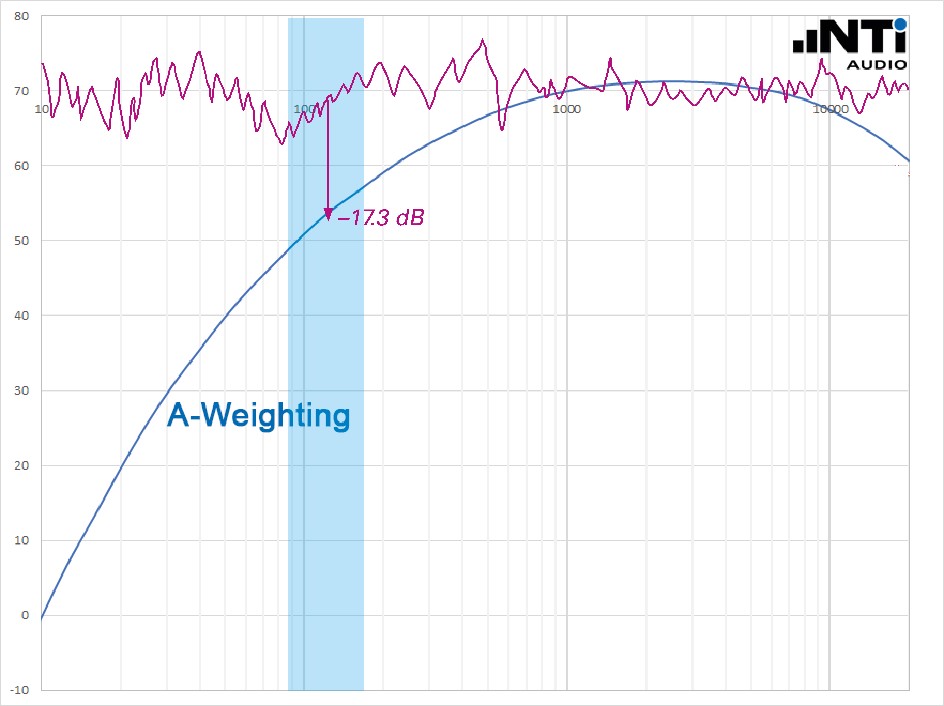Let's say you want to calculate the A-weighted broadband level from an octave or 1/3-octave band spectrum - is that possible?
Basically, the answer is: Yes, it is possible. The Room Acoustics Reporter software, for example, supports this conversion.
However, it should be noted that the result of this conversion is less accurate than the direct measurement of the broadband level. This is because the conversion from Z-weighted to A-weighted level values is done with the help of normalised correction values for each octave or 1/3 octave band level (similar to frequency weighting). These correction values are based on the nominal (i.e. typical) difference values between the Z and the A weighting. In practice, however, it happens that the nominal correction values differ slightly from the actual values. Consequently, differences may occur between the result subsequently calculated from the spectrum and the actual A-weighted broadband level.
The following schematic diagrams illustrate this situation.

A-Weighting with -16.1 dB
Nominal case: The normalised correction value of -16.1 dB for the 125 Hz octave band is based on the assumption that the sound signal has a largely flat frequency response (e.g. pink noise). In the case shown above, this would result in an A-weighted 125 Hz band level of 70 - 16.1 = 53.9 dBA.

A-Weighting with -17.3 dB
Real situation: In practice, the sound signal may not have a flat frequency response. This means that the actual influence of the A-weighting differs from the nominal case. In the example shown, the meter shows 52.7 dBA for the 125 Hz octave band, i.e. -1.2 dB less than in the nominal case.